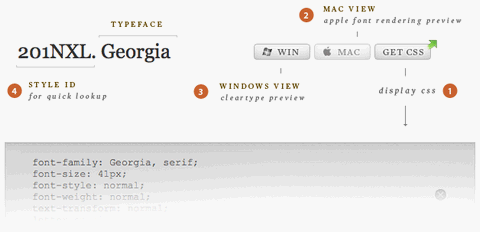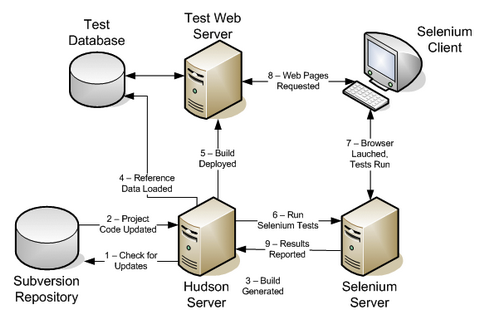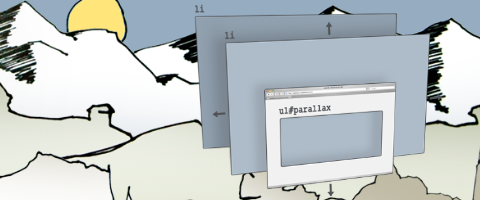
Cappuccino is an open source application framework for developing applications that look and feel like the desktop software users are familiar with.
Cappuccino is built on top of standard web technologies like JavaScript, and it implements most of the familiar APIs from GNUstep and Apple’s Cocoa frameworks. When you program in Cappuccino, you don’t need to concern yourself with the complexities of traditional web technologies like HTML, CSS, or even the DOM. The unpleasantries of building complex cross browser applications are abstracted away for you.
Cappuccino was implemented using a new programming language called Objective-J, which is modelled after Objective-C and built entirely on top of JavaScript. Programs written in Objective-J are interpreted in the client, so no compilation or plugins are required.
Instead of doing all or most of the work on the server, Cappuccino applications do as much as possible in the client. A typical application would never reload, but rather send and recieve data using traditional AJAX techniques and then present that data in the client code.
Requirements: –
Demo: http://cappuccino.org/
License: LGPL License

Typechart lets you flip through, preview and compare web typography while retrieving the CSS.
You can view different typefaces with different font sizes and emphases. One of the handy features is that you can compare Windows rendering with Apple font rendering.
You can also download the CSS code for a specific typographic style, cach style corresponds with a style ID, which allows you to annotate prototypes and retrieve the css while coding as well.

Requirements: –
Demo: http://www.typechart.com
License: License Free
Developing web applications is getting more complex – it’s easy to accidentally break functionality as changes are made. In this article, Ben describes the setup his team uses test their apps as changes are committed; automatically notifying the developers of any problems.
Being able to support Ajax-heavy applications through multiple browsers across multiple operating systems is now a primary requirement, as is being able to scale to thousands (or, if you’re lucky, millions) of users. This article looks at one way of cracking the problem of regression testing (retesting previously working parts of an application following a new build) a modern web application, using two superb open source projects: Hudson and Selenium. Article “Easy Automated Web Application Testing with Hudson and Selenium” taught us the following.
- It checks our Subversion repository every hour to see if anyone has committed any changes.
- If they have, it updates the project from Subversion and builds it.
- It then creates a clean version of our application database, loads in reference data and deploys the application on our app server.
- A job is triggered that runs through a series of tests in a remotely-controlled web browser on the fresh application.
- Anything that deviates from the accepted norm is logged and screenshots of the web browser are taken.
- Screenshots of the browser are also taken for key pages of the site for later checking by a human.
- If any of the tests fail, the developers responsible for the changes are notified by email of the problems.
- Their issue tracker is updated with any issues that were fixed in the build

Source: Easy Automated Web Application Testing with Hudson and Selenium
Are you a freelancer? Would you like to find some freelance works related to Web Development or Web Design? There are loads of job boards out there, but how many of them are actually built for web developers and designers? And How many of them are acutally popular? Here is a list of the top job boards for web developers and designers. Please feel free to suggest the ones you like.
Sensational Jobs

FreelanceSwitch Job Board

Authentic Jobs

Smashing jobs

FreshWebJobs

Elance

Krop

jParallax turns a selected element into a ‘window’, or viewport, and all its children into absolutely positioned layers that can be seen through the viewport. These layers move in response to the mouse, and, depending on their dimensions, they move by different amounts, in a parallaxy kind of way. If the layers are made of <div>s or <li>s or any other container then content can be positioned inside those layers, and Parallax provides methods for navigating to that content in response to user events.

The default behaviour of jParallax is to show the whole width of a layer in response to the mouse travelling the whole width of a jParallaxed element. The simplest way to use jParallax is to make the layers different sizes using CSS. Bigger layers move faster and thus appear closer, and unless a layer is smaller than the viewport, its edges are never seen.
Requirements: –
Demo: http://webdev.stephband.info/parallax.html
License: License Free

You’re writing an email to invite a friend to meet at a local San Francisco restaurant that neither of you has been to. You’d like to include a map. Today, this involves the disjointed tasks of message composition on a web-mail service, mapping the address on a map site, searching for reviews on the restaurant on a search engine, and finally copying all links into the message being composed. And you haven’t even really sent a map or useful reviews—only links to them.
Mozilla Labs has announced the launch of Ubiquity. Ubiquity empower users to control the web browser with language-based instructions. (With search, users type what they want to find. With Ubiquity, they type what they want to do.) And it enables on-demand, user-generated mashups with existing open Web APIs. (In other words, allowing everyubone–not just Web developers–to remix the Web so it fits their needs, no matter what page they are on, or what they are doing.)
Ubiquity lets you map and insert maps anywhere; translate on-page; search amazon, google, wikipedia, yahoo, youtube, etc.; digg and twitter; lookup and insert yelp review; get the weather; syntax highlight any code you find; and a lot more. Ubiquity “command list†to see them all.
All of the code underlying the Ubiquity experiment is being released as open source software under the GPL/MPL/LGPL tri-license as well.
Requirements: –
Demo: http://labs.mozilla.com/2008/08/introducing-ubiquity/
License: GPL/MPL/LGPL Tri-License
















